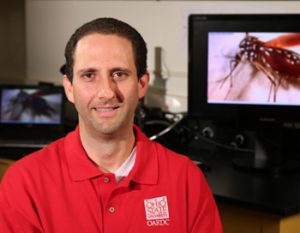
(Photo: Hawksbill turtle, iStock)
Today, June 8, we celebrate World Oceans Day.
Even in Ohio, of course, we’re connected to the oceans. By Lake Erie, the Ohio River, our local watersheds, farming practices, food choices, plastic use, energy sources, and on and on.
Why celebrate, honor and care for the oceans? Here’s the eloquent, wise Rachel Carson in her 1941 book Under the Sea-Wind: “To stand at the edge of the sea, to sense the ebb and flow of the tides, to feel the breath of a mist moving over a great salt marsh, to watch the flight of shore birds that have swept up and down the surf lines of the continents for untold thousands of years, to see the running of the old eels and the young shad to the sea, is to have knowledge of things that are as nearly eternal as any earthly life can be.”
 Secrest Arboretum, part of CFAES’s Wooster campus, is hosting a free Guided Summer Walk on Friday, June 15.
Secrest Arboretum, part of CFAES’s Wooster campus, is hosting a free Guided Summer Walk on Friday, June 15. Stone Lab’s summer guest lecture series will kick off on Thursday, June 14. The topics: climate change and presumably trees.
Stone Lab’s summer guest lecture series will kick off on Thursday, June 14. The topics: climate change and presumably trees. “We’re taking advantage of something plants have been doing for millions of years” — evolving chemicals to defend themselves from pests — “to hopefully get a leg up on mosquitoes.”
“We’re taking advantage of something plants have been doing for millions of years” — evolving chemicals to defend themselves from pests — “to hopefully get a leg up on mosquitoes.”
 Ohio State scientists, including from CFAES, have successfully tested a new chemical to control mosquitoes, including the ones that spread Zika, and it comes from a traditional medicinal plant found only in Madagascar.
Ohio State scientists, including from CFAES, have successfully tested a new chemical to control mosquitoes, including the ones that spread Zika, and it comes from a traditional medicinal plant found only in Madagascar.